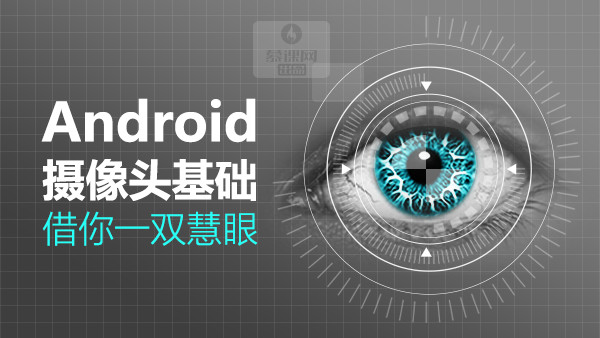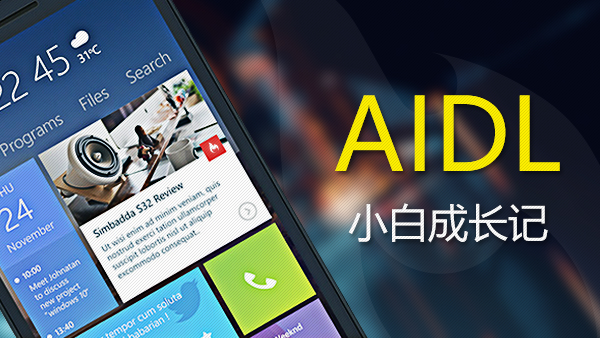一. Builder设计模式
定义
将一个复杂对象的构建与它的表示分离,使得不同的构建过程可以创建不同的显示,但其根本还是不变。
使用场景
1、相同的方法,不同的执行顺序,产生不同的事件结果时;
2、多个部件或零件,都可以装配到一个对象中,但是产生的运行结果又不相同时;
3、产品类非常复杂,或者产品类中的调用顺序不同产生了不同的效能,这个时候使用建造者模式非常合适。
UML图
介绍
Product 产品类 : 产品的抽象类;
Builder : 抽象类, 规范产品的组建,一般是由子类实现具体的组件过程;
ConcreteBuilder : 具体的构建器;
Director : 统一组装过程(可省略)。
Builder设计模式的工作流程
添加参数 (P) –> 组装参数 –> 显示
二. 使用Builder设计模式构建万能Dialog
主要的对象
AlertDialog (电脑对象)
AlertDialog.Builder 规范一系列的组装过程
AlertController 具体的构建器
AlertController.AlertParams 存放参数 , 一部分设置参数的功能
DialogViewHelper Dialog View 的辅助处理类
效果视图
实现的功能,基本囊括一般开发的需求
自定义布局
自定义弹窗宽高
设置弹窗位置
根据id设置控件的文本
根据id设置控件的点击事件
设置弹出动画效果,有默认动画
具体实现
DialogViewHelper.java
/**
* @creation_time: 2017/6/26
* @author: Vegen
* @e-mail: vegenhu@163.com
* @description: Dialog View 的辅助处理类
*/class DialogViewHelper { private View mContentView = null; // WeakReference软引用,防止霸气侧漏
private SparseArray<WeakReference<View>> mViews; public DialogViewHelper(Context mContext, int mViewLayoutResId) { this(); // 很重要,没有就报mViews空指针
mContentView = LayoutInflater.from(mContext).inflate(mViewLayoutResId, null);
} public DialogViewHelper() {
mViews = new SparseArray<>();
} /**
* 设置布局
* @param contentView
*/
public void setContentView(View contentView) { this.mContentView = contentView;
} /**
* 设置文本
* @param viewId
* @param text
*/
public void setText(int viewId, CharSequence text) { // 优化,减少findViewById的次数,做缓存
TextView tv = getView(viewId); if (tv != null){
tv.setText(text);
}
} public <T extends View> T getView(int viewId) {
WeakReference<View> viewWeakReference = mViews.get(viewId);
View view = null; if (viewWeakReference != null){
view = viewWeakReference.get();
} if (view == null){
view = mContentView.findViewById(viewId); if (view != null) {
mViews.put(viewId, new WeakReference<>(view));
}
} return (T) view;
} /**
* 设置点击事件
* @param viewId
* @param listener
*/
public void setOnClickListener(int viewId, View.OnClickListener listener) {
View view = getView(viewId); if (view != null){
view.setOnClickListener(listener);
}
} /**
* 获取ContentView
* @return
*/
public View getContentView() { return mContentView;
}
}AlertController.java
/**
* @creation_time: 2017/6/26
* @author: Vegen
* @e-mail: vegenhu@163.com
* @description: 具体的构建器
*/class AlertController { private AlertDialog mDialog; private Window mWindow; private DialogViewHelper mViewHelper; /**
* 获取Dialog
* @return
*/
public AlertDialog getDialog() { return mDialog;
} /**
* 获取Dialog的Window
* @return
*/
public Window getWindow() { return mWindow;
} public AlertController(AlertDialog dialog, Window window) { this.mDialog = dialog; this.mWindow = window;
} /**
* 设置文本
* @param viewId
* @param text
*/
public void setText(int viewId, CharSequence text) {
mViewHelper.setText(viewId, text);
} public <T extends View> T getView(int viewId) { return mViewHelper.getView(viewId);
} /**
* 设置点击事件
* @param viewId
* @param listener
*/
public void setOnClickListener(int viewId, View.OnClickListener listener) {
mViewHelper.setOnClickListener(viewId, listener);
} public void setViewHelper(DialogViewHelper viewHelper) { this.mViewHelper = viewHelper;
} public static class AlertParams{
public Context mContext; public int mThemeResId; // 点击空白地方是否能够取消,默认能
public boolean mCancelable = true; // dialog Cancel监听
public DialogInterface.OnCancelListener mOnCancelListener; // dialog 消失监听
public DialogInterface.OnDismissListener mOnDismissListener; // dialog 按键监听
public DialogInterface.OnKeyListener mOnKeyListener; // 布局 View
public View mView; // 布局 layout id
public int mViewLayoutResId; // 存放字体的修改
public SparseArray<CharSequence> mTextArray = new SparseArray<>(); // 存放点击时间 WeakReference软引用,优化,防止内存泄漏
public SparseArray<View.OnClickListener> mClickArray = new SparseArray<>(); // Dialog 的宽度
public int mWidth = ViewGroup.LayoutParams.WRAP_CONTENT; // 动画
public int mAnimations = 0; // 位置
public int mGravity = Gravity.CENTER; // Dialog 的高度
public int mHeight = ViewGroup.LayoutParams.WRAP_CONTENT; public AlertParams(Context context, int themeResId) { this.mContext = context; this.mThemeResId = themeResId;
} /**
* 绑定和设置参数
* @param mAlert
*/
public void apply(AlertController mAlert) { // 设置参数
// 1.设置Dialog布局 DialogViewHelper
DialogViewHelper viewHelper = null; if (mViewLayoutResId != 0){
viewHelper = new DialogViewHelper(mContext, mViewLayoutResId);
} if (mView != null){
viewHelper = new DialogViewHelper();
viewHelper.setContentView(mView);
} if (viewHelper == null){ throw new IllegalArgumentException("请设置布局setContentView()");
} // 给Dialog 设置布局
mAlert.getDialog().setContentView(viewHelper.getContentView()); // 设置 Controller的辅助类
mAlert.setViewHelper(viewHelper); // 2.设置文本
int textArraySize = mTextArray.size(); for (int i = 0; i < textArraySize; i ++){
mAlert.setText(mTextArray.keyAt(i), mTextArray.valueAt(i));
} // 3.设置点击
int clickArraySize = mClickArray.size(); for (int i = 0; i < clickArraySize; i ++){
mAlert.setOnClickListener(mClickArray.keyAt(i), mClickArray.valueAt(i));
} // 4.配置自定义的效果 全屏 从底部弹出 默认动画
Window window = mAlert.getWindow(); // 设置位置
window.setGravity(mGravity); // 设置动画
if (mAnimations != 0) {
window.setWindowAnimations(mAnimations);
} // 设置宽高
WindowManager.LayoutParams params = window.getAttributes();
params.width = mWidth;
params.height = mHeight;
window.setAttributes(params);
}
}
}AlertDialog.java,自定义的万能Dialog(参考系统的AlertDialog)
/**
* @creation_time: 2017/6/26
* @author: Vegen
* @e-mail: vegenhu@163.com
* @description: 自定义的万能Dialog
*/public class AlertDialog extends Dialog {
private AlertController mAlert; public AlertDialog(@NonNull Context context, @StyleRes int themeResId) { super(context, themeResId);
mAlert = new AlertController(this, getWindow());
} /**
* 设置文本
* @param viewId
* @param text
*/
public void setText(int viewId, CharSequence text) {
mAlert.setText(viewId, text);
} public <T extends View> T getView(int viewId) { return mAlert.getView(viewId);
} /**
* 设置点击事件
* @param viewId
* @param listener
*/
public void setOnClickListener(int viewId, View.OnClickListener listener) {
mAlert.setOnClickListener(viewId, listener);
} public static class Builder{
private final AlertController.AlertParams P; /**
* Creates a builder for an alert dialog that uses the default alert
* dialog theme.
* <p>
* The default alert dialog theme is defined by
* {@link android.R.attr#alertDialogTheme} within the parent
* {@code context}'s theme.
*
* @param context the parent context
*/
public Builder(Context context) { this(context, R.style.dialog);
} /**
* Creates a builder for an alert dialog that uses an explicit theme
* resource.
* <p>
* The specified theme resource ({@code themeResId}) is applied on top
* of the parent {@code context}'s theme. It may be specified as a
* style resource containing a fully-populated theme, such as
* {@link android.R.style#Theme_Material_Dialog}, to replace all
* attributes in the parent {@code context}'s theme including primary
* and accent colors.
* <p>
* To preserve attributes such as primary and accent colors, the
* {@code themeResId} may instead be specified as an overlay theme such
* as {@link android.R.style#ThemeOverlay_Material_Dialog}. This will
* override only the window attributes necessary to style the alert
* window as a dialog.
* <p>
* Alternatively, the {@code themeResId} may be specified as {@code 0}
* to use the parent {@code context}'s resolved value for
* {@link android.R.attr#alertDialogTheme}.
*
* @param context the parent context
* @param themeResId the resource ID of the theme against which to inflate
* this dialog, or {@code 0} to use the parent
* {@code context}'s default alert dialog theme
*/
public Builder(Context context, int themeResId) {
P = new AlertController.AlertParams(context, themeResId);
} /**
* Sets a custom view to be the contents of the alert dialog.
* <p>
* When using a pre-Holo theme, if the supplied view is an instance of
* a {@link } then the light background will be used.
* <p>
* <strong>Note:</strong> To ensure consistent styling, the custom view
* should be inflated or constructed using the alert dialog's themed
* context obtained via {@link #getContext()}.
*
* @param view the view to use as the contents of the alert dialog
* @return this Builder object to allow for chaining of calls to set
* methods
*/
public Builder setView(View view) {
P.mView = view;
P.mViewLayoutResId = 0; return this;
} /**
* 设置布局内容的layout id
* @param layoutResId
* @return
*/
public Builder setContentView(int layoutResId) {
P.mView = null;
P.mViewLayoutResId = layoutResId; return this;
} /**
* 设置文本
* @param viewId
* @param text
* @return
*/
public Builder setText(int viewId, CharSequence text){
P.mTextArray.put(viewId, text); return this;
} /**
* 设置点击事件
* @param view
* @param listener
* @return
*/
public Builder setOnClickListener(int view, View.OnClickListener listener){
P.mClickArray.put(view, listener); return this;
} /**
* Sets the callback that will be called if the dialog is canceled.
*
* <p>Even in a cancelable dialog, the dialog may be dismissed for reasons other than
* being canceled or one of the supplied choices being selected.
* If you are interested in listening for all cases where the dialog is dismissed
* and not just when it is canceled, see
* {@link #setOnDismissListener(android.content.DialogInterface.OnDismissListener) setOnDismissListener}.</p>
* @see #setCancelable(boolean)
* @see #setOnDismissListener(android.content.DialogInterface.OnDismissListener)
*
* @return This Builder object to allow for chaining of calls to set methods
*/
public Builder setOnCancelListener(OnCancelListener onCancelListener) {
P.mOnCancelListener = onCancelListener; return this;
} /**
* Sets the callback that will be called when the dialog is dismissed for any reason.
*
* @return This Builder object to allow for chaining of calls to set methods
*/
public Builder setOnDismissListener(OnDismissListener onDismissListener) {
P.mOnDismissListener = onDismissListener; return this;
} /**
* Sets the callback that will be called if a key is dispatched to the dialog.
*
* @return This Builder object to allow for chaining of calls to set methods
*/
public Builder setOnKeyListener(OnKeyListener onKeyListener) {
P.mOnKeyListener = onKeyListener; return this;
} /**
* 全屏
* @return
*/
public Builder fullWidth(){
P.mWidth = ViewGroup.LayoutParams.MATCH_PARENT; return this;
} /**
* 从底部弹出
* @param isAnimation 是否添加动画
* @return
*/
public Builder formBottom(boolean isAnimation){ if (isAnimation){
P.mAnimations = R.style.dialog_from_bottom_anim;
}
P.mGravity = Gravity.BOTTOM; return this;
} /**
* 设置宽高
* @param width
* @param height
* @return
*/
public Builder setWidthAndHeight(int width, int height){
P.mWidth = width;
P.mHeight = height; return this;
} /**
* 添加默认动画
* @return
*/
public Builder addDefaultAnimation(){
P.mAnimations = R.style.dialog_scale_anim; return this;
} /**
* 添加动画
* @param styleAnimation
* @return
*/
public Builder setAnimations(int styleAnimation){
P.mAnimations = styleAnimation; return this;
} /**
* Creates an {@link AlertDialog} with the arguments supplied to this
* builder.
* <p>
* Calling this method does not display the dialog. If no additional
* processing is needed, {@link #show()} may be called instead to both
* create and display the dialog.
*/
public AlertDialog create() { // Context has already been wrapped with the appropriate theme.
final AlertDialog dialog = new AlertDialog(P.mContext, P.mThemeResId);
P.apply(dialog.mAlert);
dialog.setCancelable(P.mCancelable); if (P.mCancelable) {
dialog.setCanceledOnTouchOutside(true);
}
dialog.setOnCancelListener(P.mOnCancelListener);
dialog.setOnDismissListener(P.mOnDismissListener); if (P.mOnKeyListener != null) {
dialog.setOnKeyListener(P.mOnKeyListener);
} return dialog;
} /**
* Creates an {@link AlertDialog} with the arguments supplied to this
* builder and immediately displays the dialog.
* <p>
* Calling this method is functionally identical to:
* <pre>
* AlertDialog dialog = builder.create();
* dialog.show();
* </pre>
*/
public AlertDialog show() { final AlertDialog dialog = create();
dialog.show(); return dialog;
}
}
}示例的弹窗布局:detail_comment_dialog.xml
<?xml version="1.0" encoding="utf-8"?><FrameLayout xmlns:android="http://schemas.android.com/apk/res/android" android:id="@+id/root_view" android:layout_width="fill_parent" android:layout_height="wrap_content"> <LinearLayout android:layout_width="fill_parent" android:layout_height="wrap_content" android:background="@color/comment_dialog_bg" android:orientation="vertical" android:padding="10.0dip"> <EditText android:id="@+id/comment_editor" android:layout_width="fill_parent" android:layout_height="wrap_content" android:background="@drawable/bg_detail_comment_editor" android:hint="@string/ss_share_hint" android:maxHeight="120.0dip" android:padding="9.0dip" android:textColor="@color/comment_dialog_content_text" android:textSize="16.0sp" /> <LinearLayout android:layout_width="fill_parent" android:layout_height="wrap_content" android:layout_marginTop="10.0dip" android:gravity="center_vertical"> <TextView android:id="@+id/share_label" android:layout_width="wrap_content" android:layout_height="wrap_content" android:layout_centerVertical="true" android:layout_marginRight="10.0dip" android:text="@string/comment_dialog_share_label" android:textColor="@color/comment_dialog_share_text" android:textSize="13.0sp" /> <LinearLayout android:layout_width="0dp" android:layout_height="wrap_content" android:layout_weight="1"> <ImageView android:id="@+id/account_icon_weibo" android:layout_width="wrap_content" android:layout_height="wrap_content" android:src="@mipmap/account_icon_weibo" /> <ImageView android:id="@+id/account_icon_tencent" android:layout_width="wrap_content" android:layout_marginLeft="10dp" android:layout_height="wrap_content" android:src="@mipmap/account_icon_tencent" /> </LinearLayout> <LinearLayout android:id="@+id/platform_layout" android:layout_width="wrap_content" android:layout_height="wrap_content" android:layout_toRightOf="@id/share_label" android:orientation="horizontal" /> <TextView android:id="@+id/submit_btn" android:layout_width="50.0dip" android:layout_height="25.0dip" android:layout_alignParentRight="true" android:layout_centerVertical="true" android:background="@drawable/bg_comment_submit" android:gravity="center" android:text="@string/comment_dialog_send" android:textColor="@color/comment_dialog_submit_text" android:textSize="13.0sp" /> <TextView android:id="@+id/text_limit" android:layout_width="wrap_content" android:layout_height="wrap_content" android:layout_centerVertical="true" android:layout_marginRight="10.0dip" android:layout_toLeftOf="@id/submit_btn" android:textSize="13.0sp" android:visibility="invisible" /> </LinearLayout> </LinearLayout></FrameLayout>12345678910111213141516171819202122232425262728293031323334353637383940414243444546474849505152535455565758596061626364656667686970717273747576777879808182838485868788899091
MainActivity.java
public class MainActivity extends BaseActivity {
@ViewById(R.id.test) private Button mTest; @Override
protected void initData() {
mTest.setOnClickListener(new View.OnClickListener() { @Override
public void onClick(View v) { // 一行代码就可以搞掂!
AlertDialog dialog = new AlertDialog.Builder(MainActivity.this)
.setContentView(R.layout.detail_comment_dialog)
.setText(R.id.submit_btn, "发送")
.setOnClickListener(R.id.account_icon_weibo, new View.OnClickListener() { @Override
public void onClick(View v) {
Toast.makeText(MainActivity.this, "微博分享", Toast.LENGTH_SHORT).show();
}
}).show();
}
});
} @Override
protected void initView() {
} @Override
protected void initTitle() {
} @Override
protected void setContentView() {
setContentView(R.layout.activity_main);
}
}代码简单的就不贴了,注释写得很详细,也不作讲解。失恋了,很伤心,决定好好学习,天天向上~~刷一大波代码安慰一下自己!




 随时随地看视频
随时随地看视频




